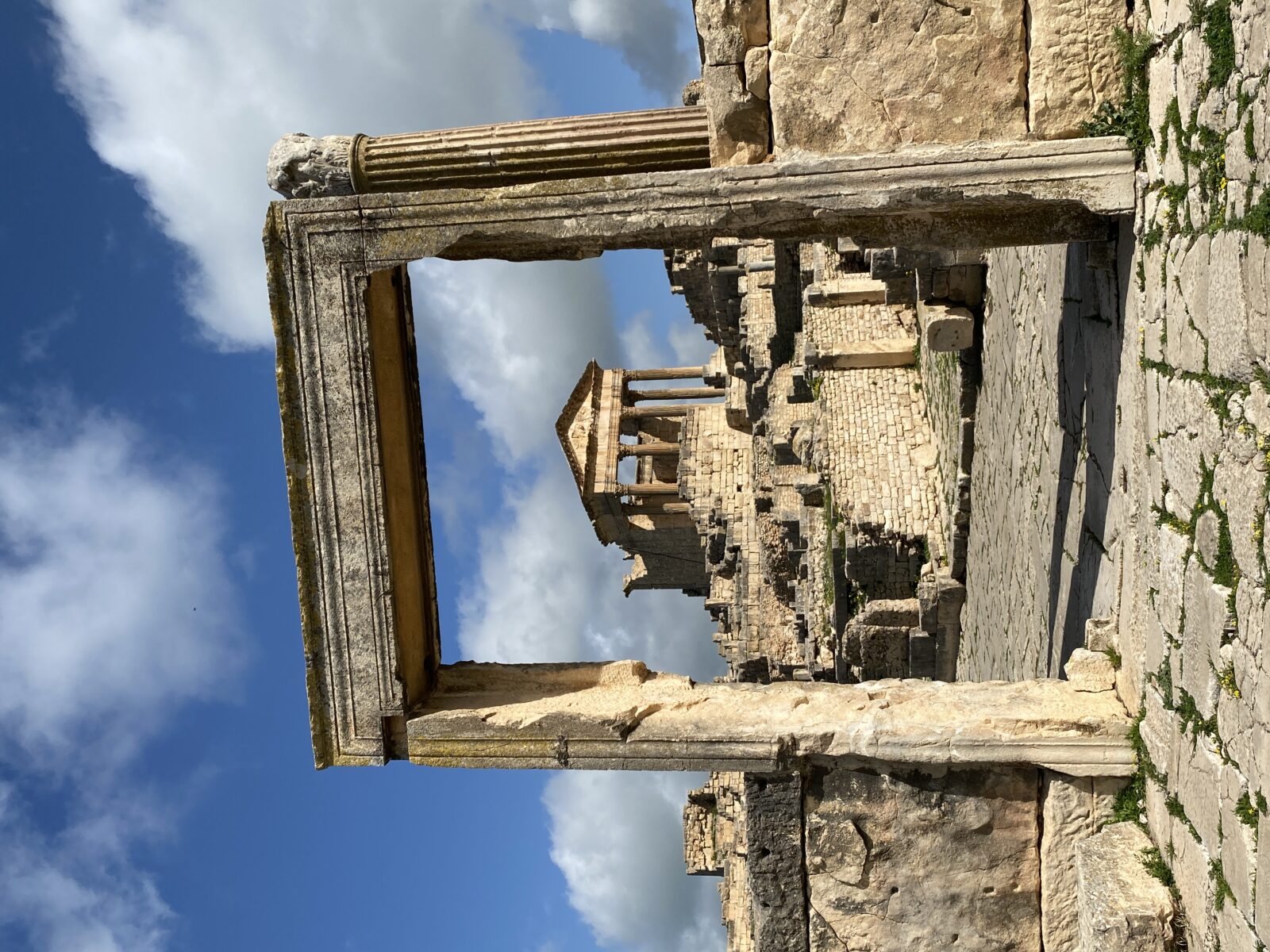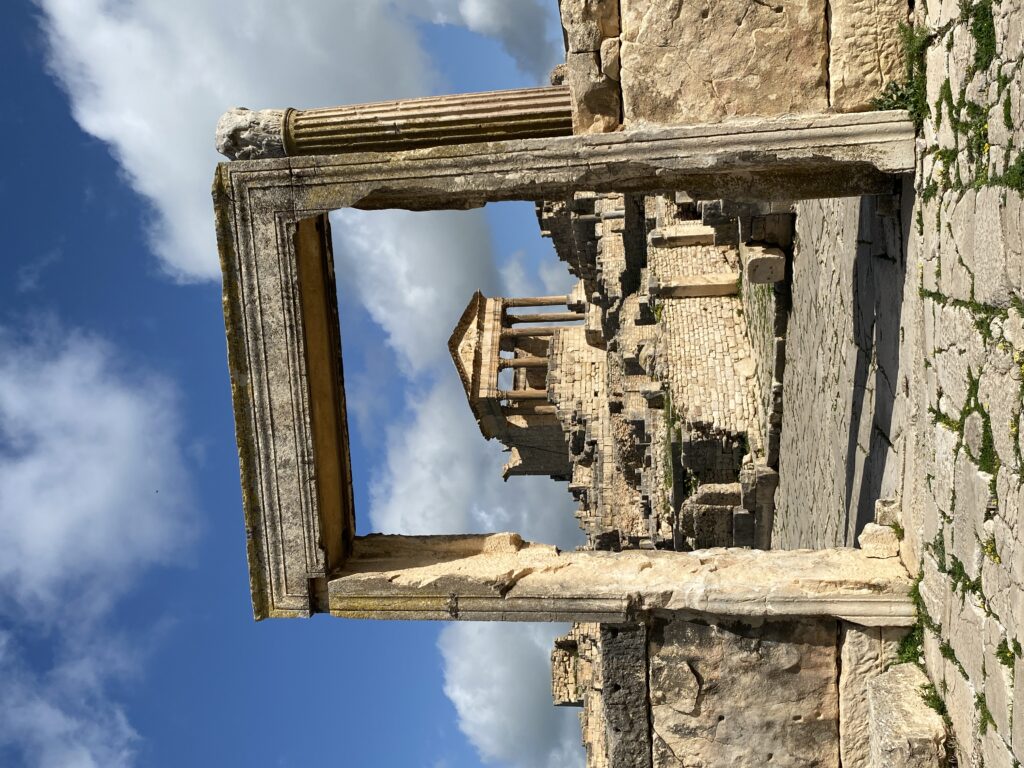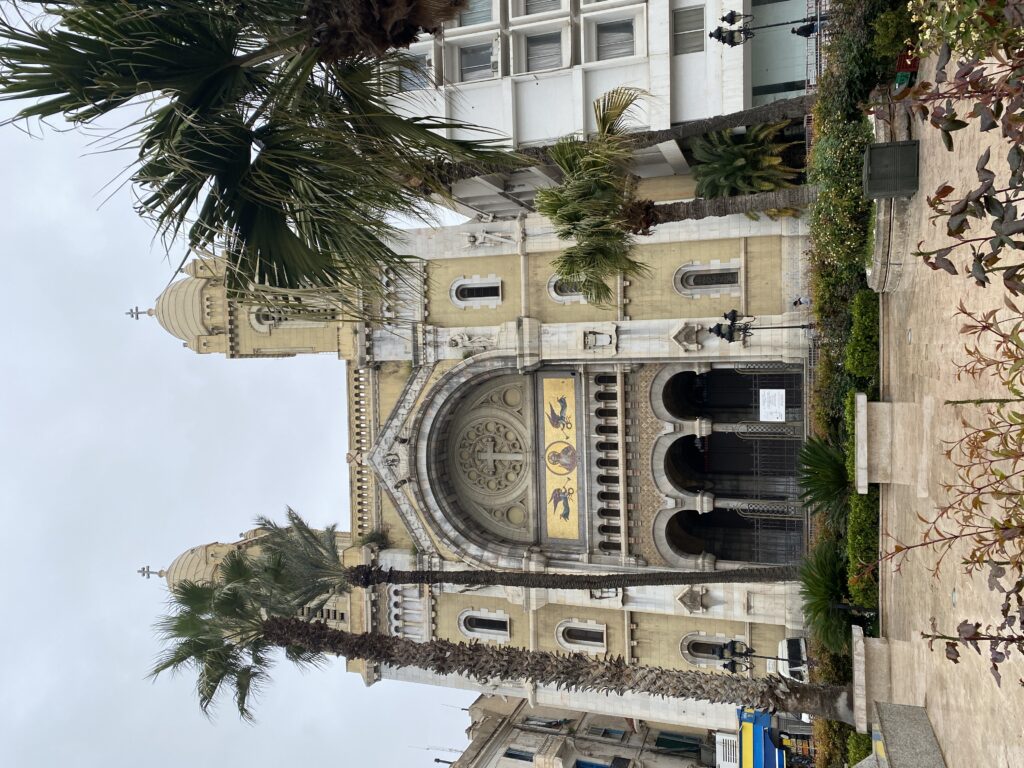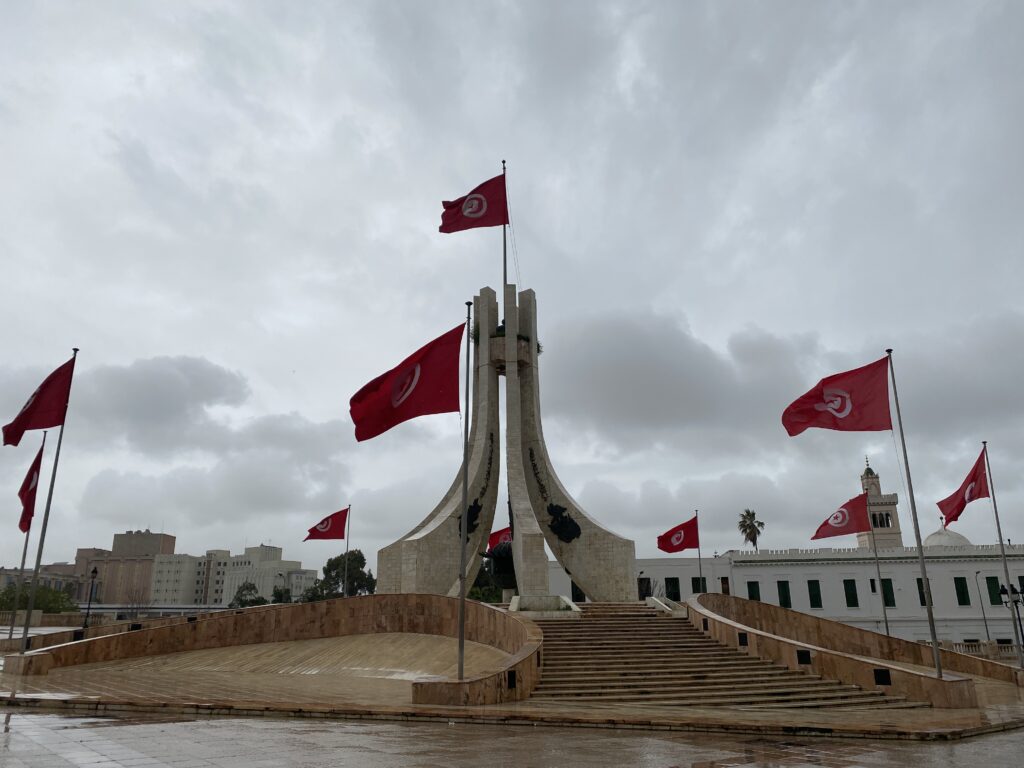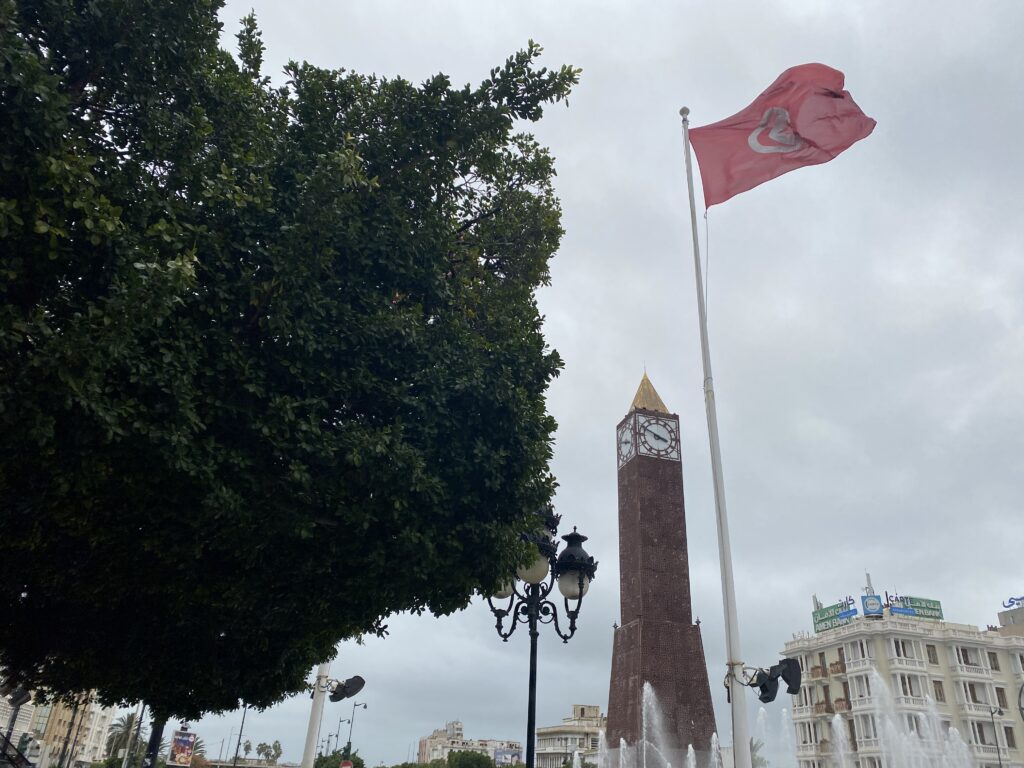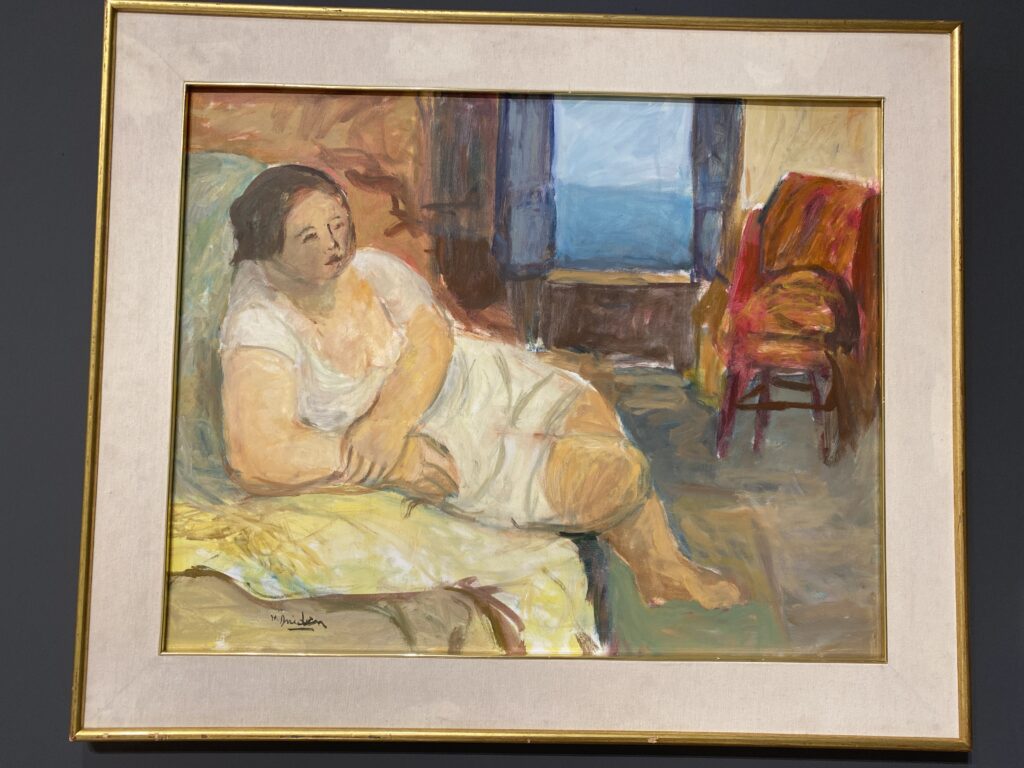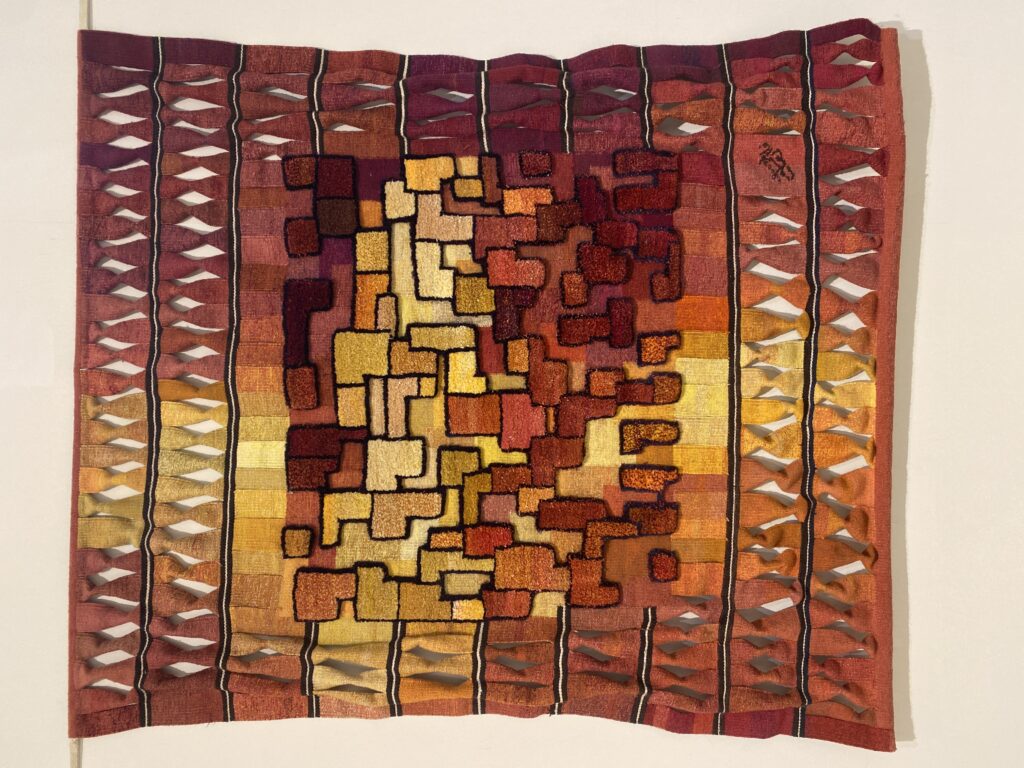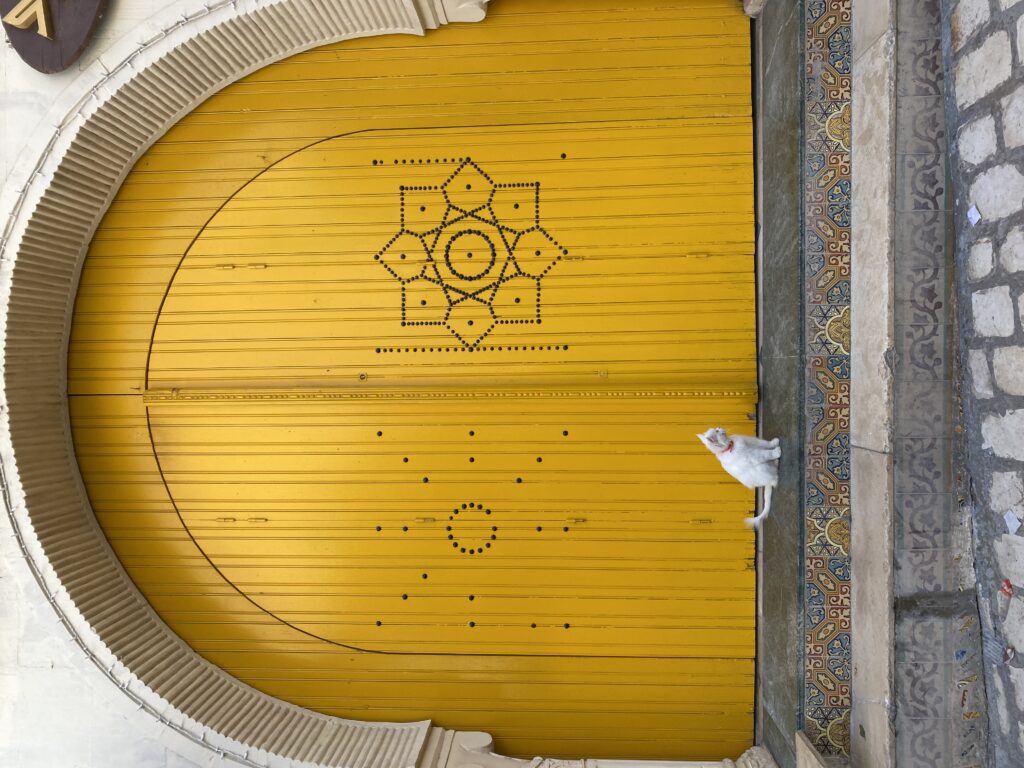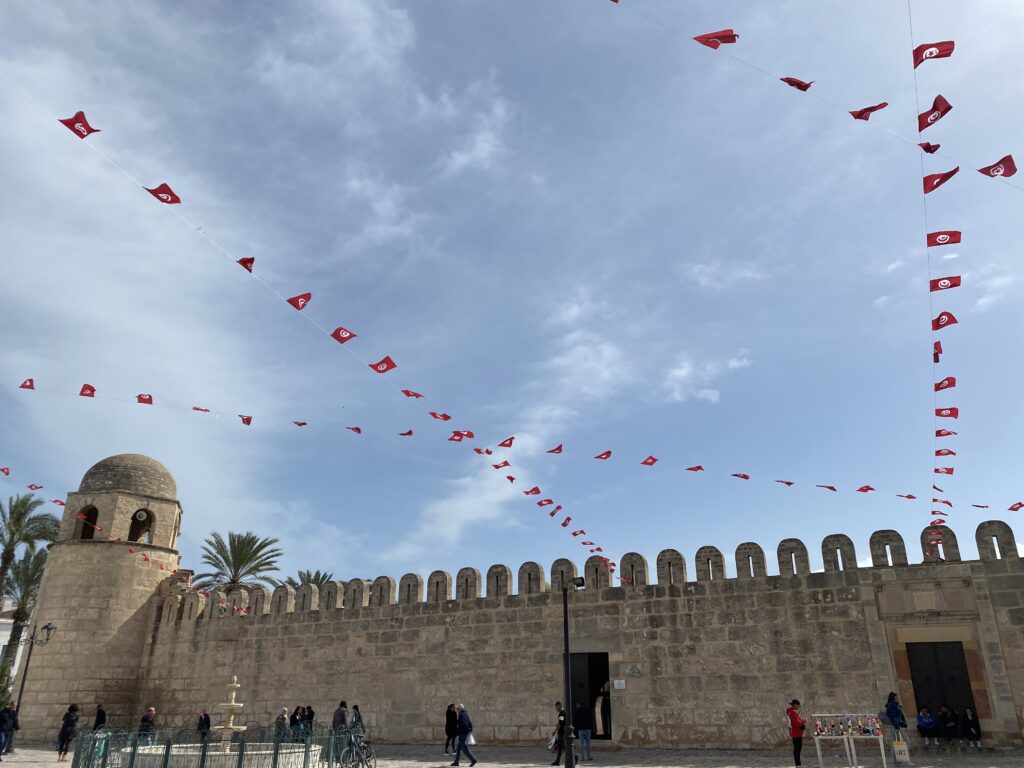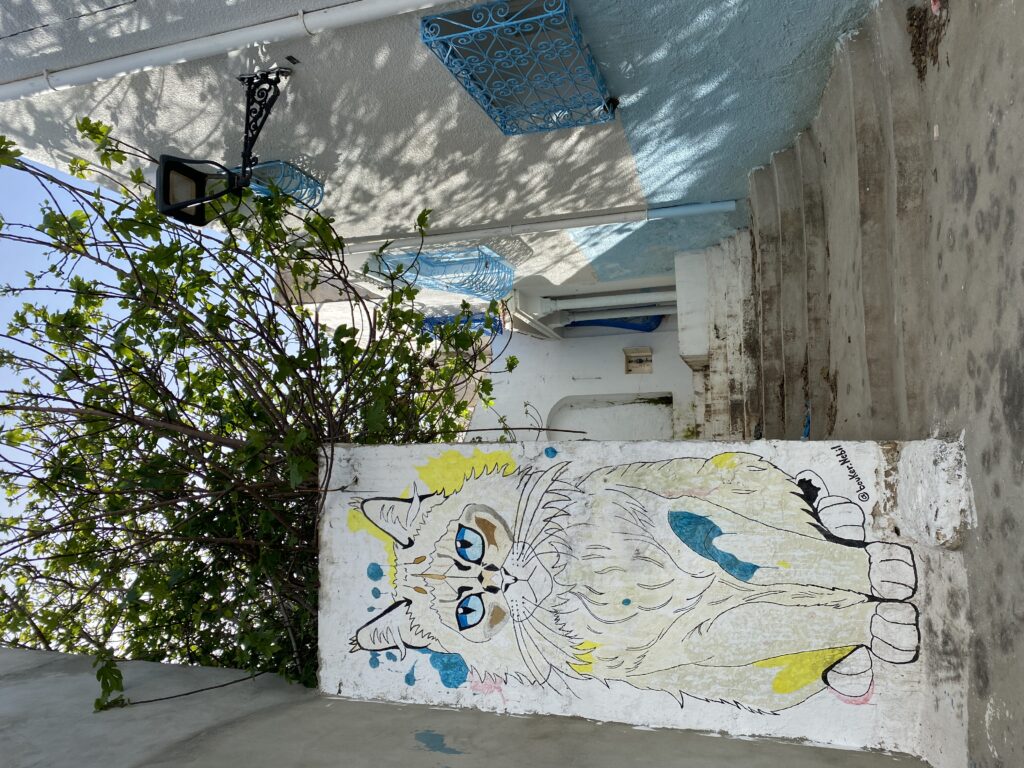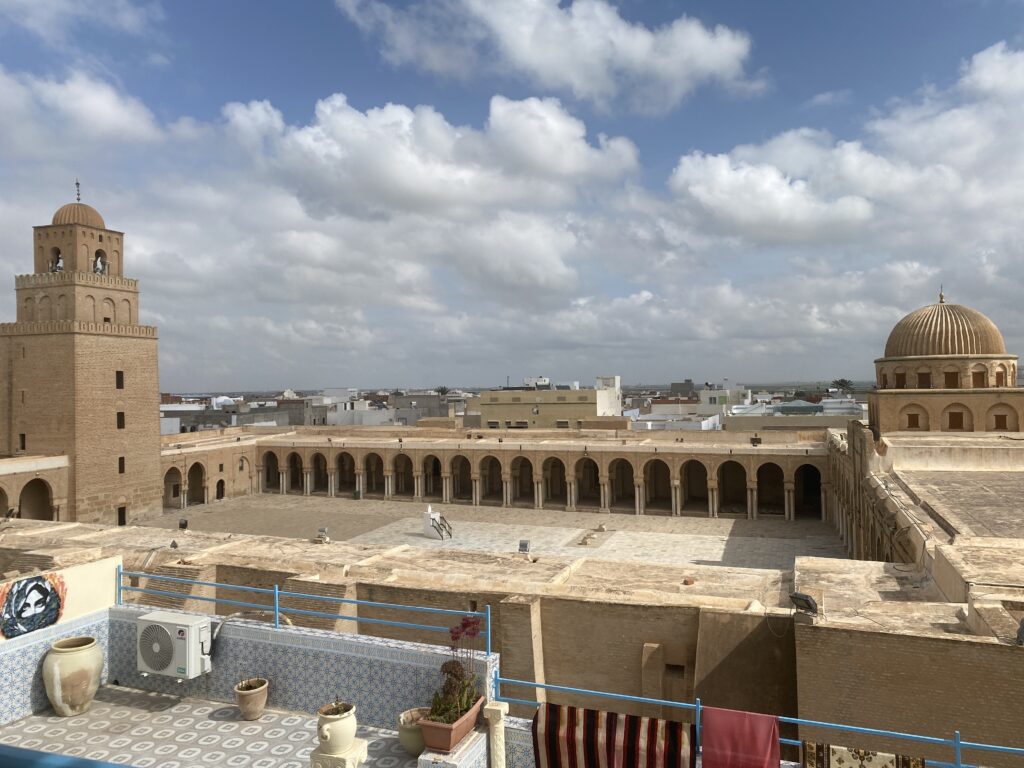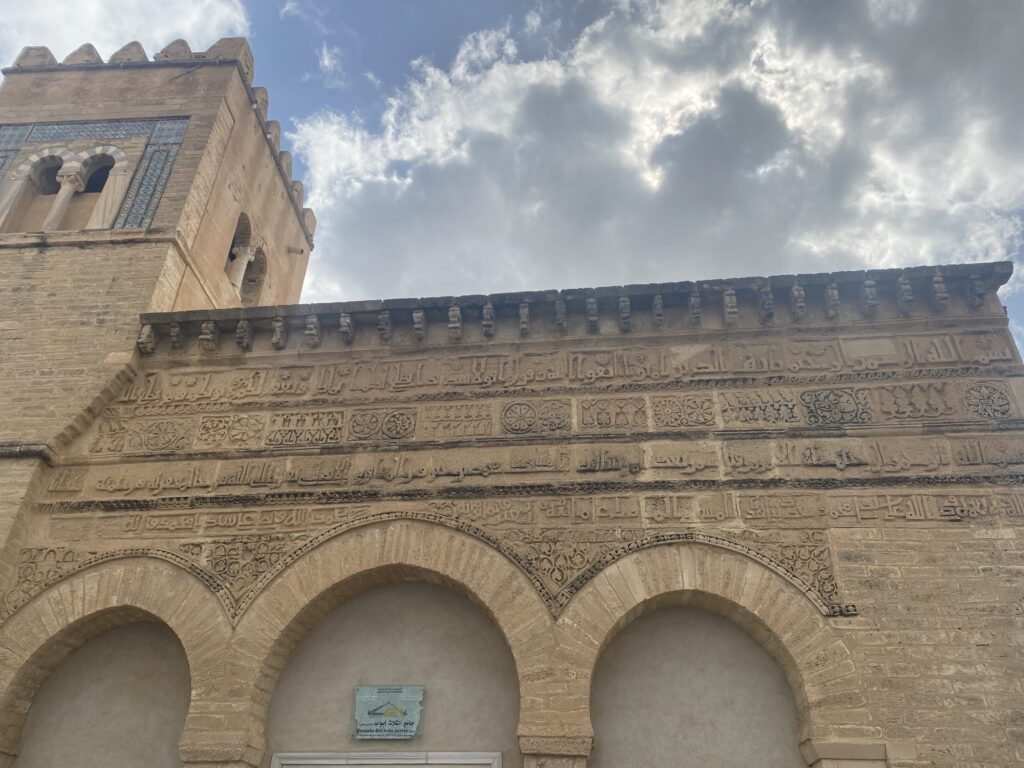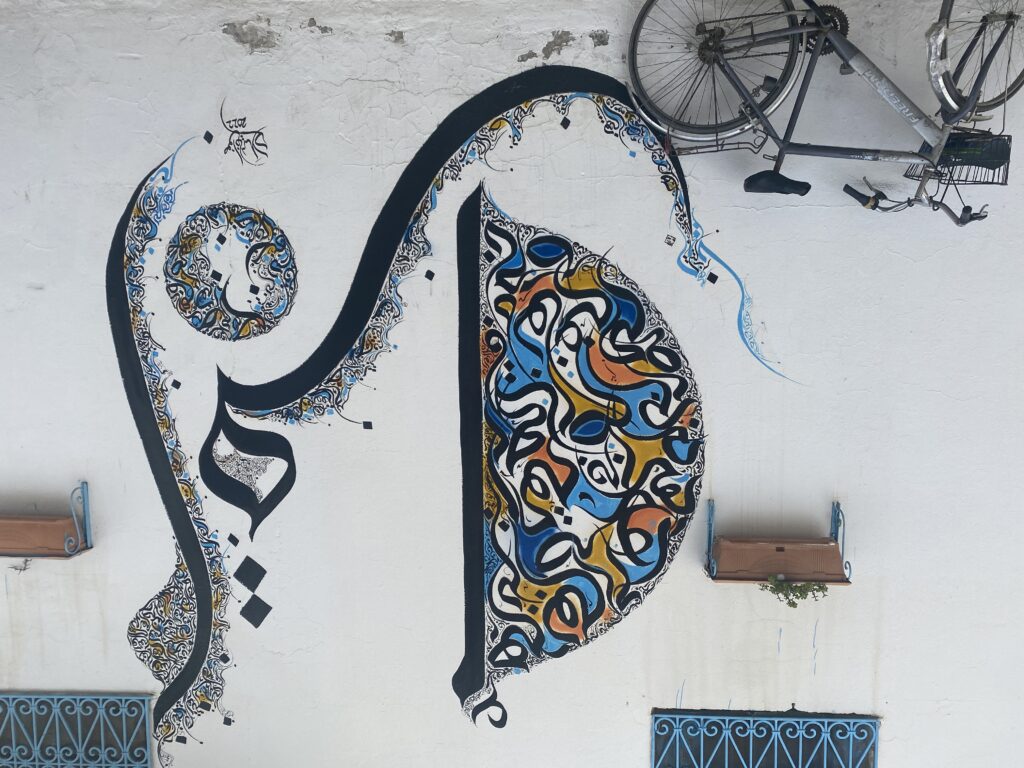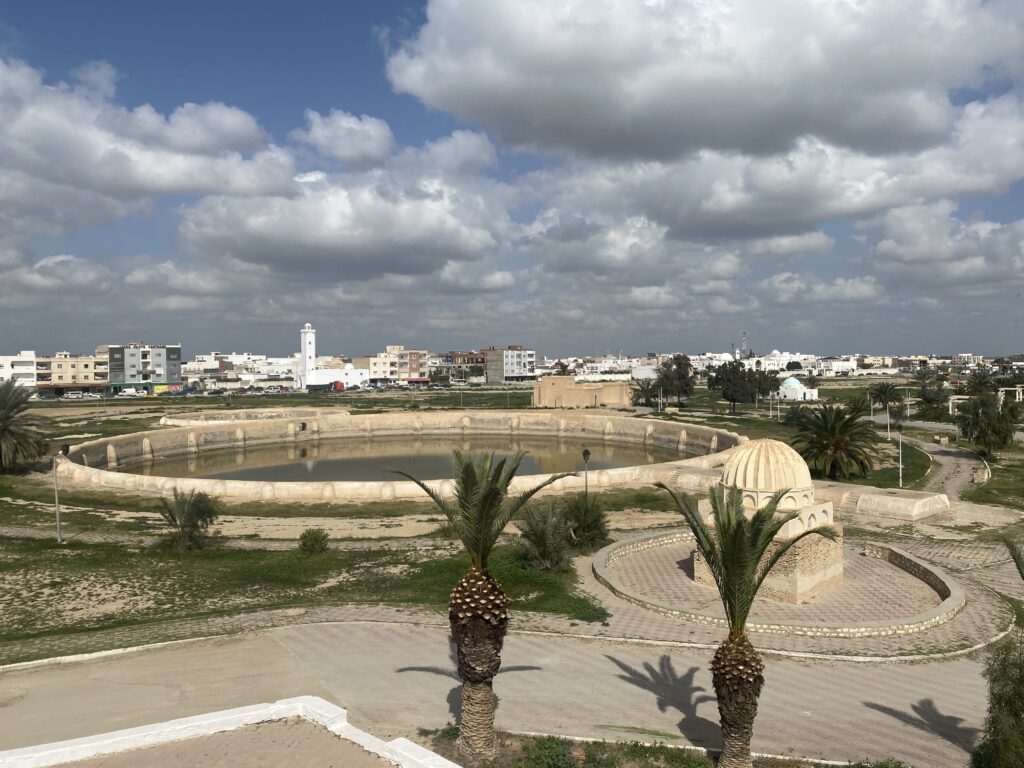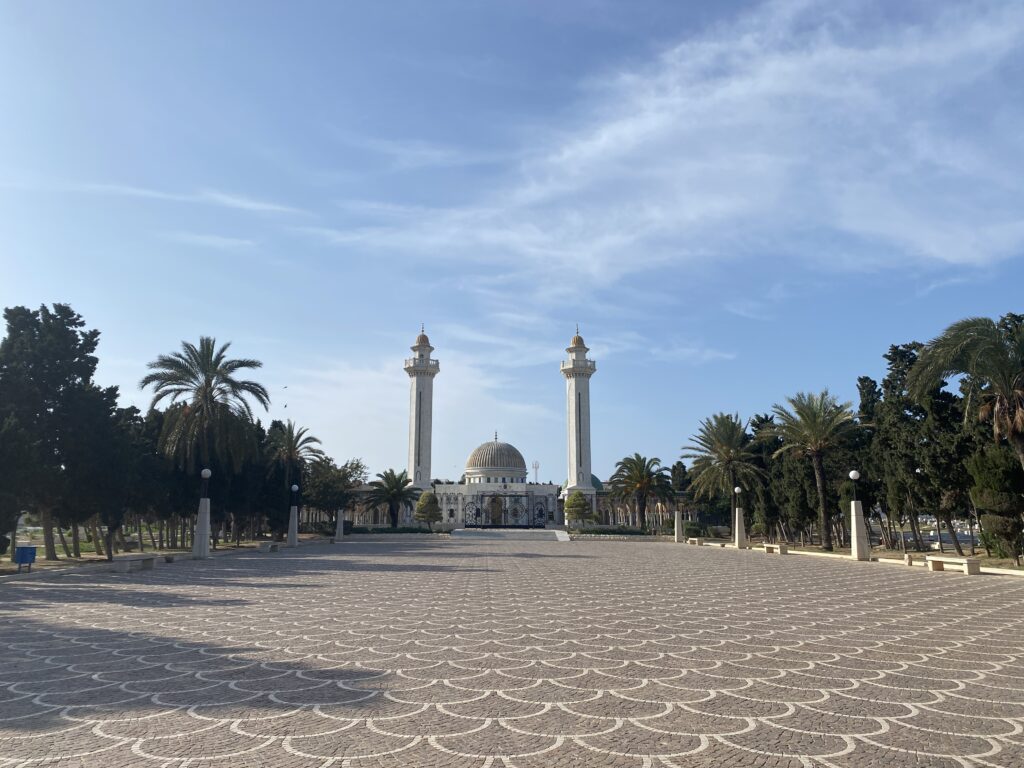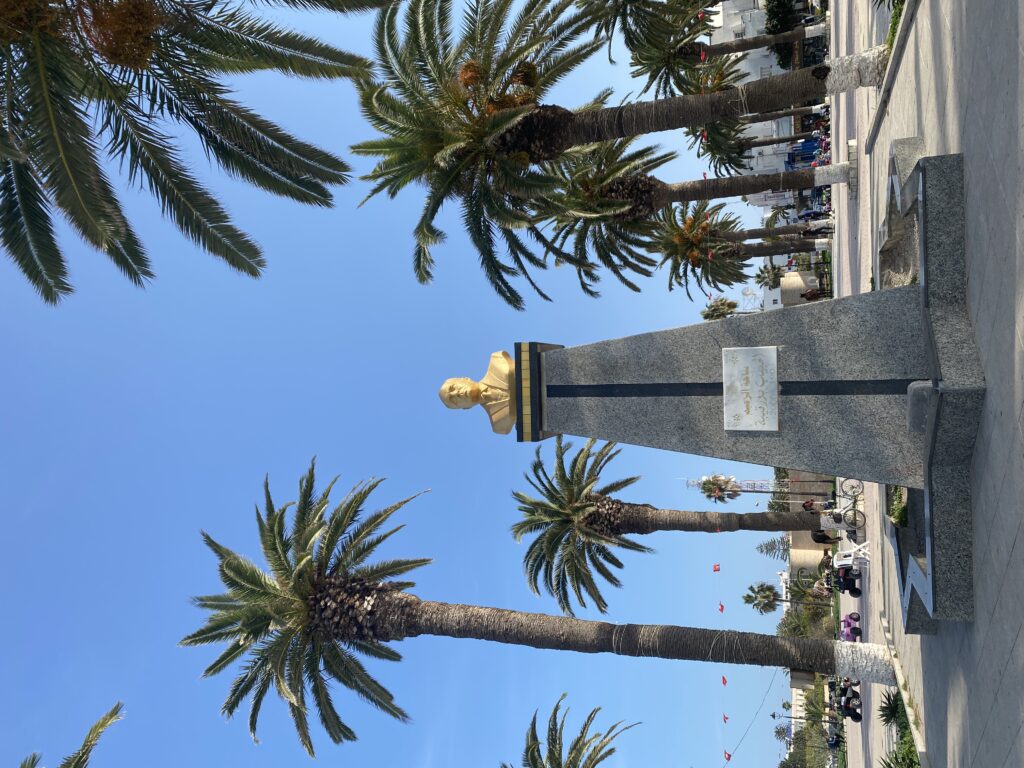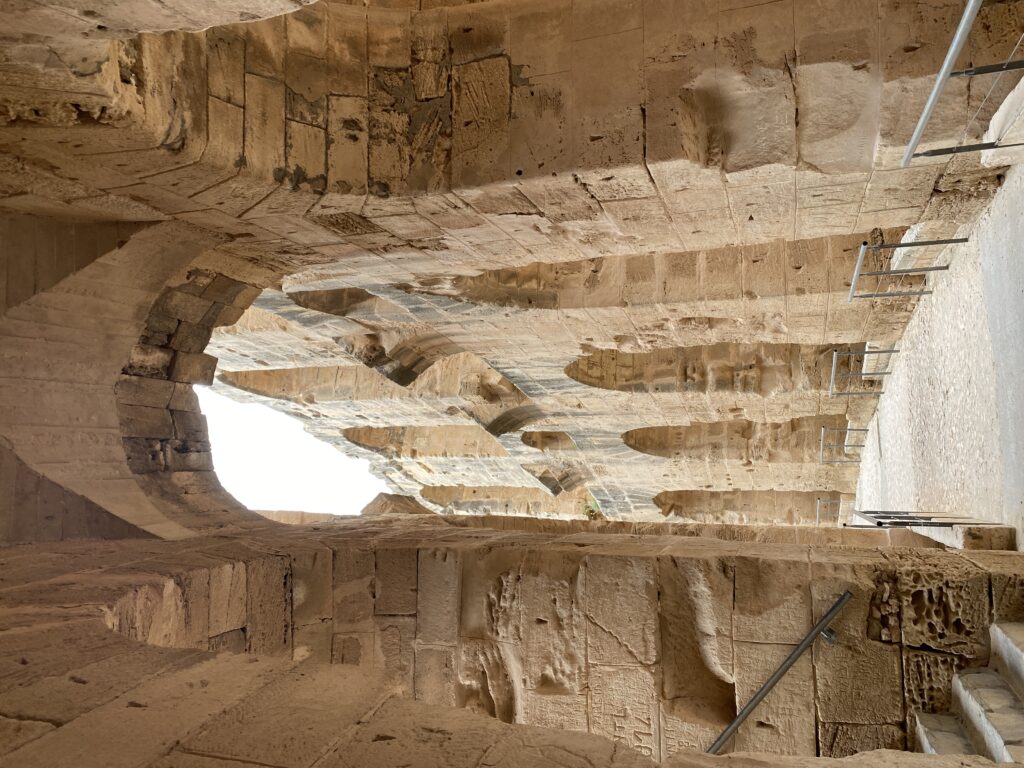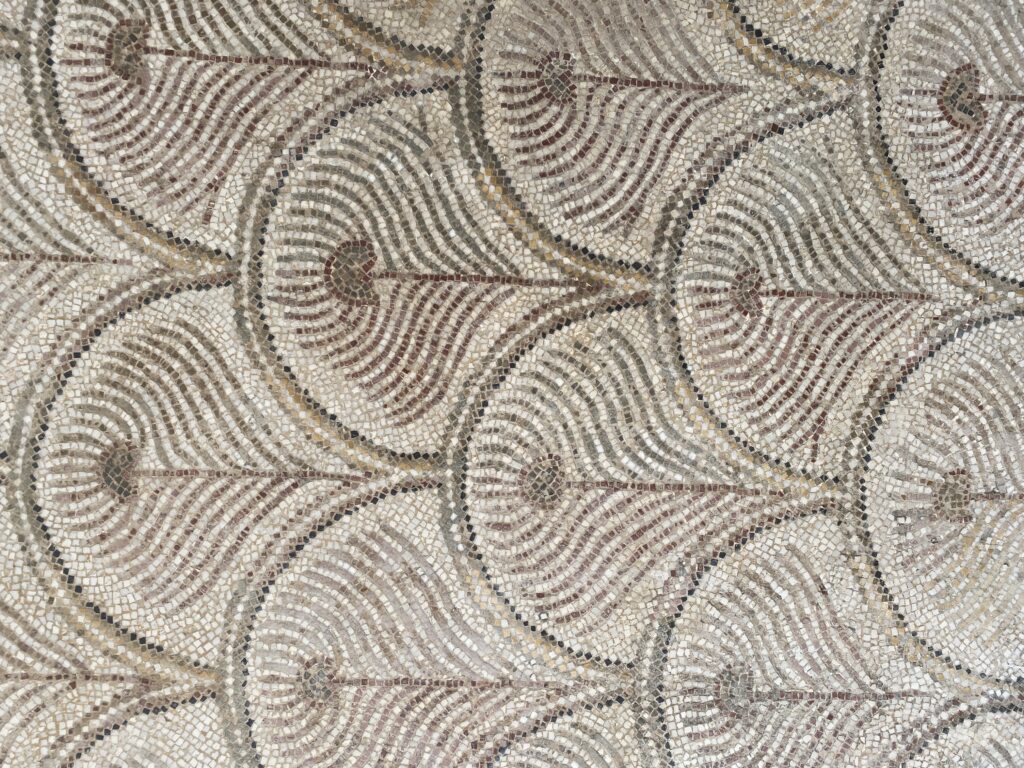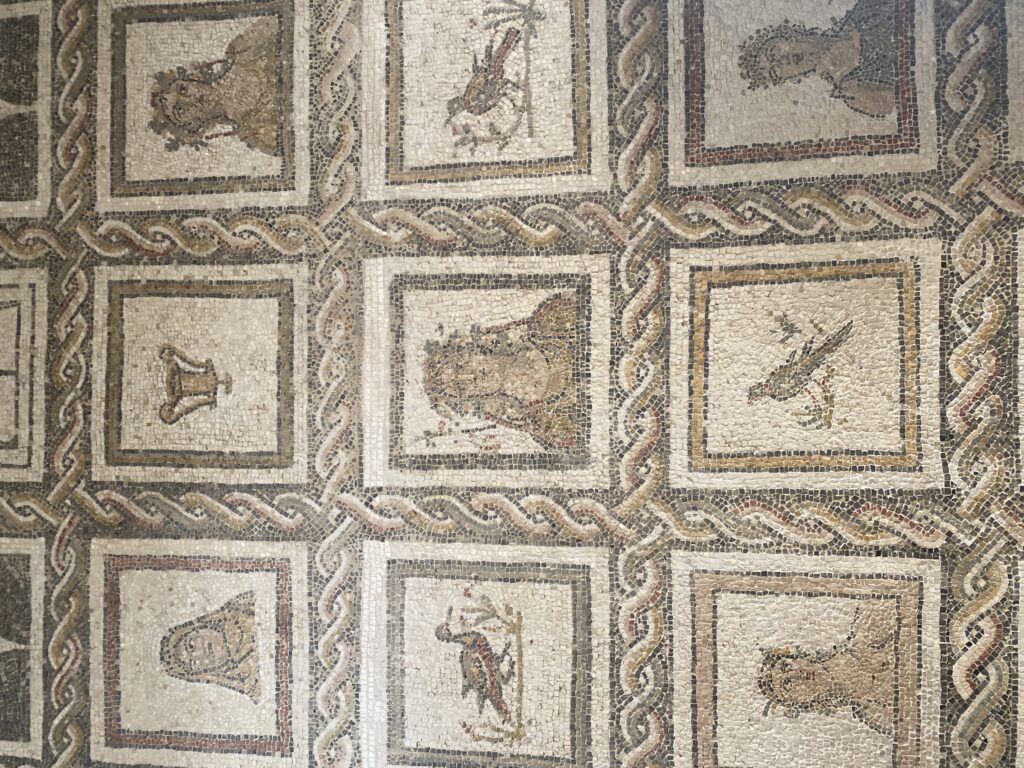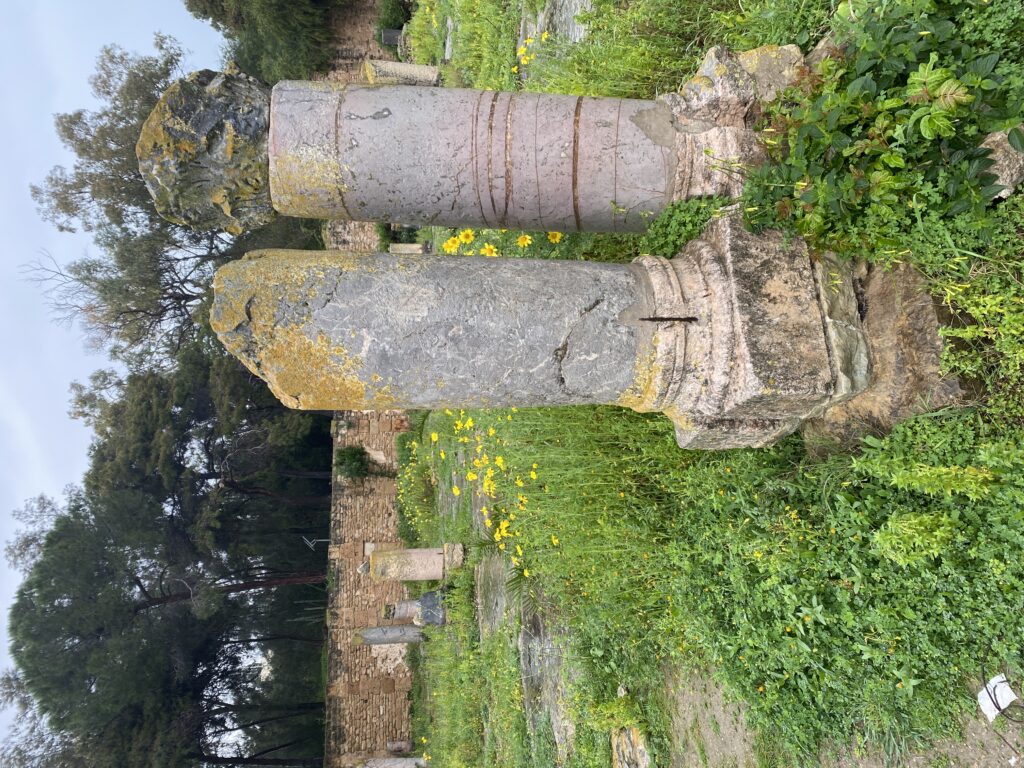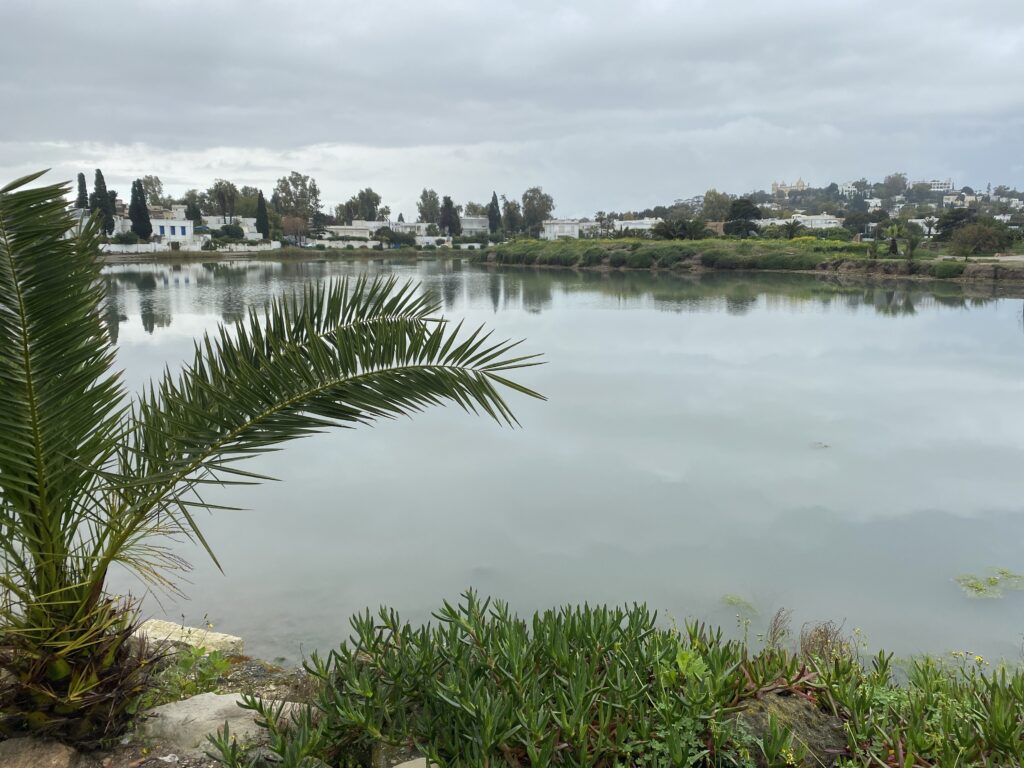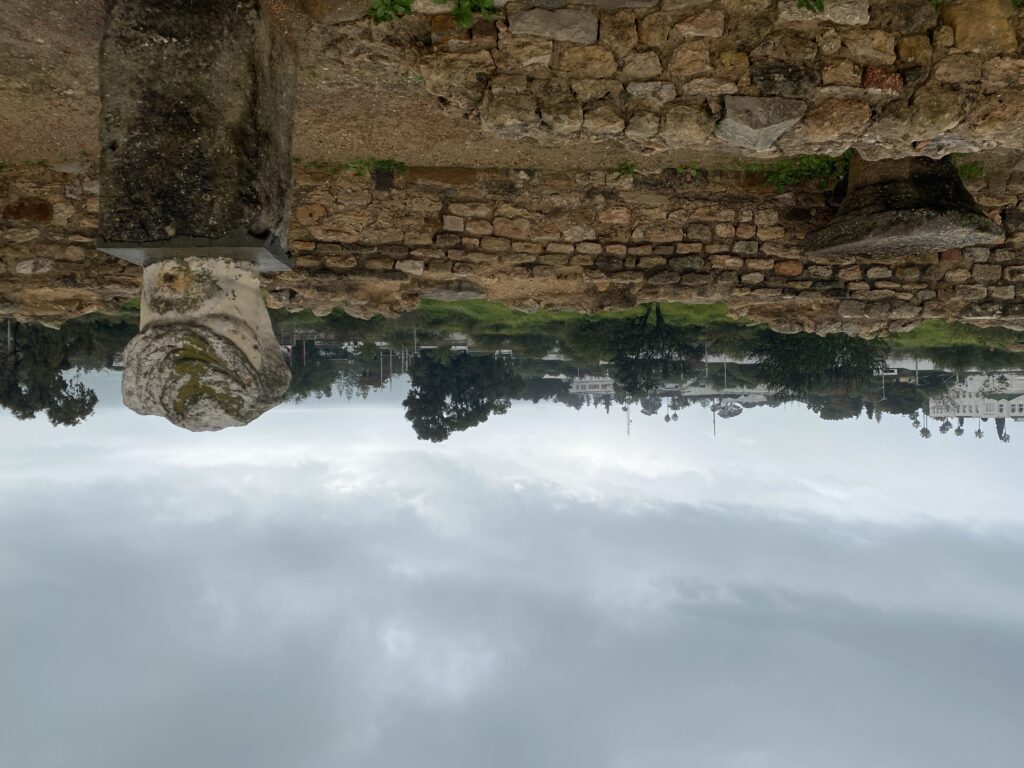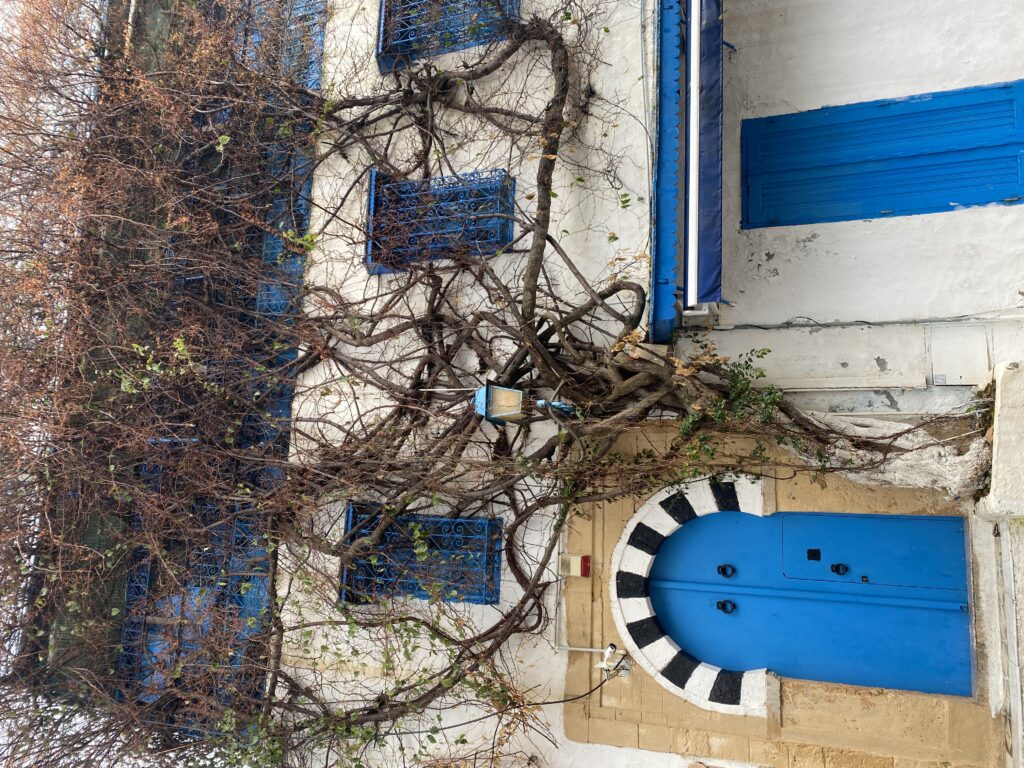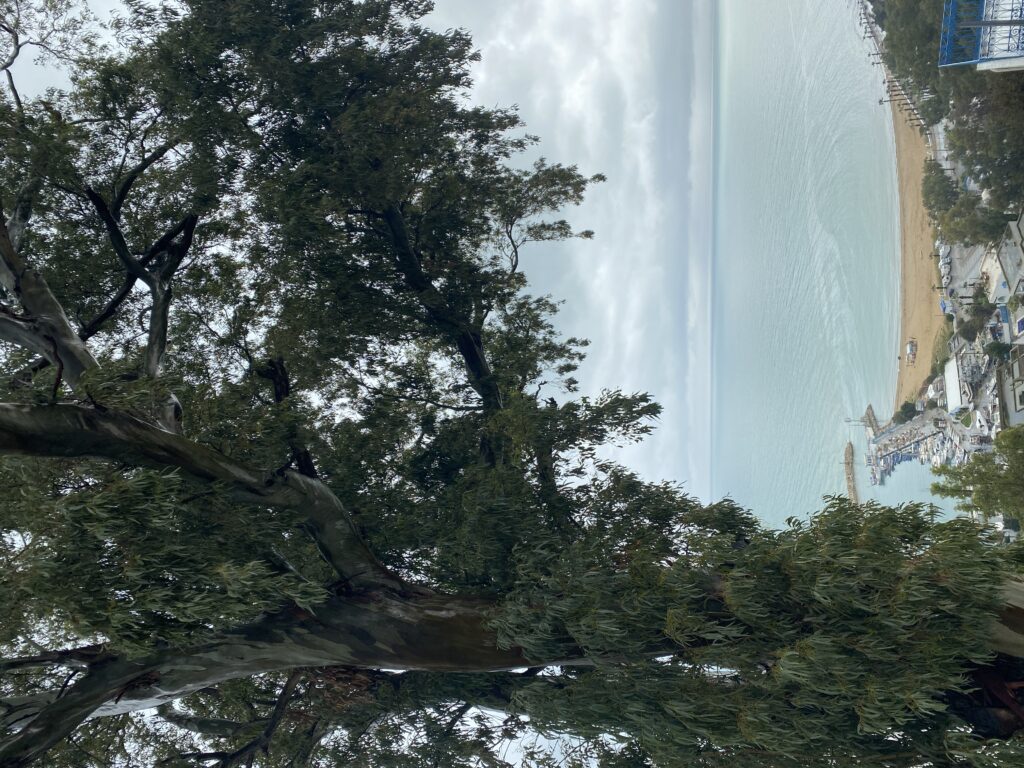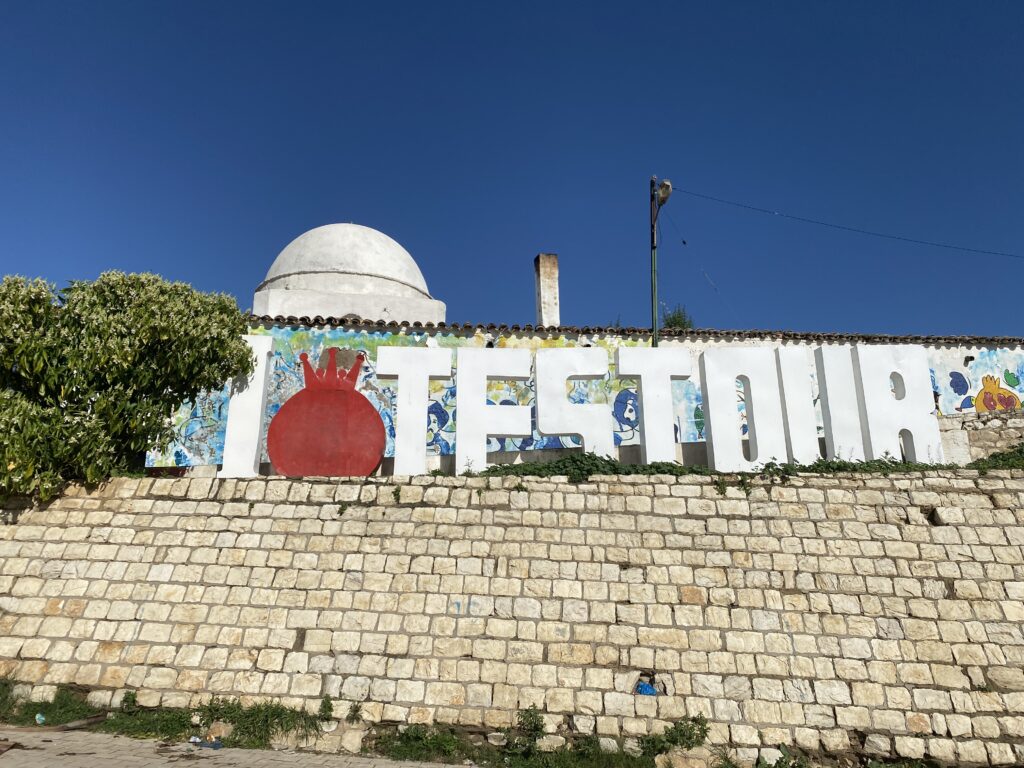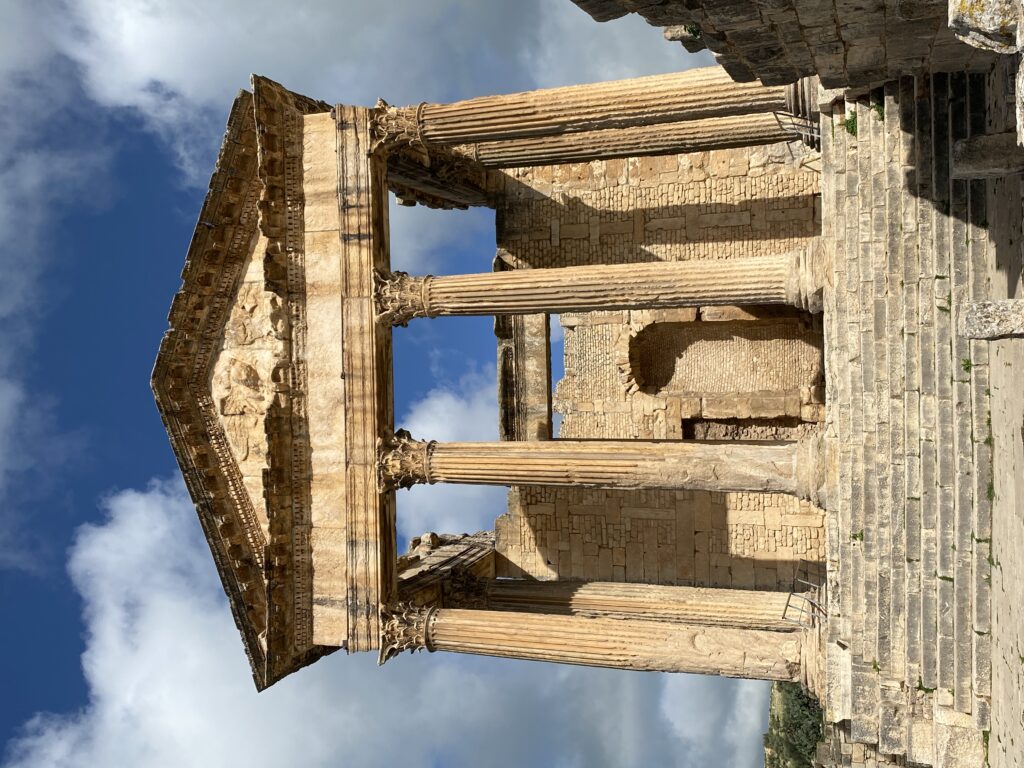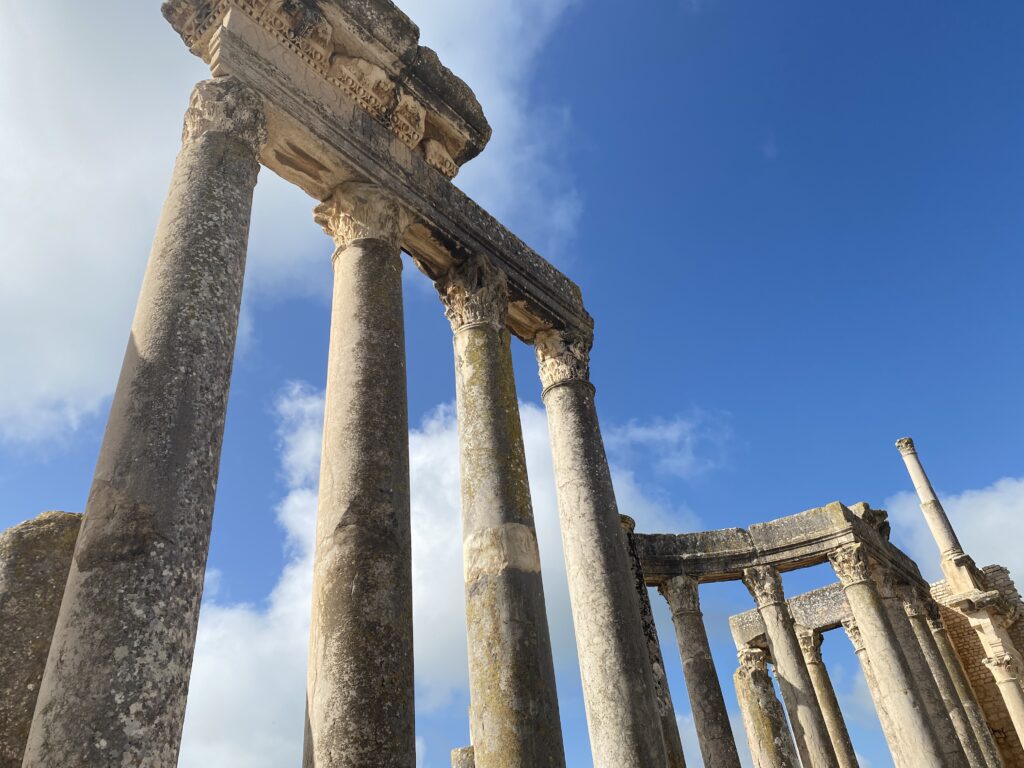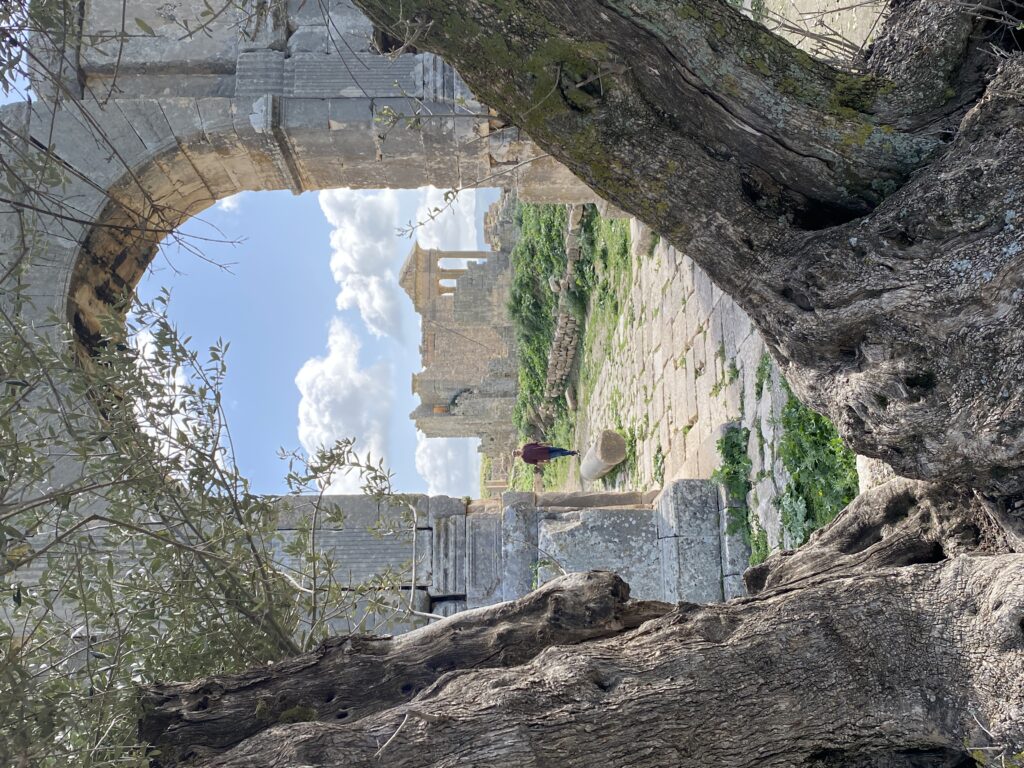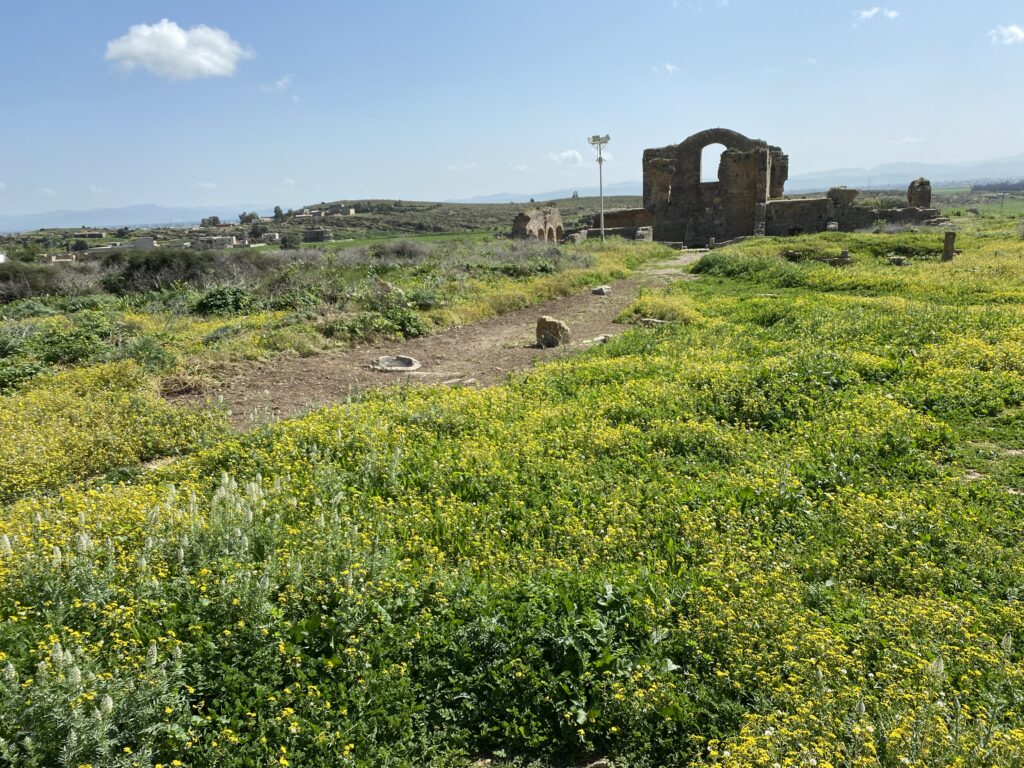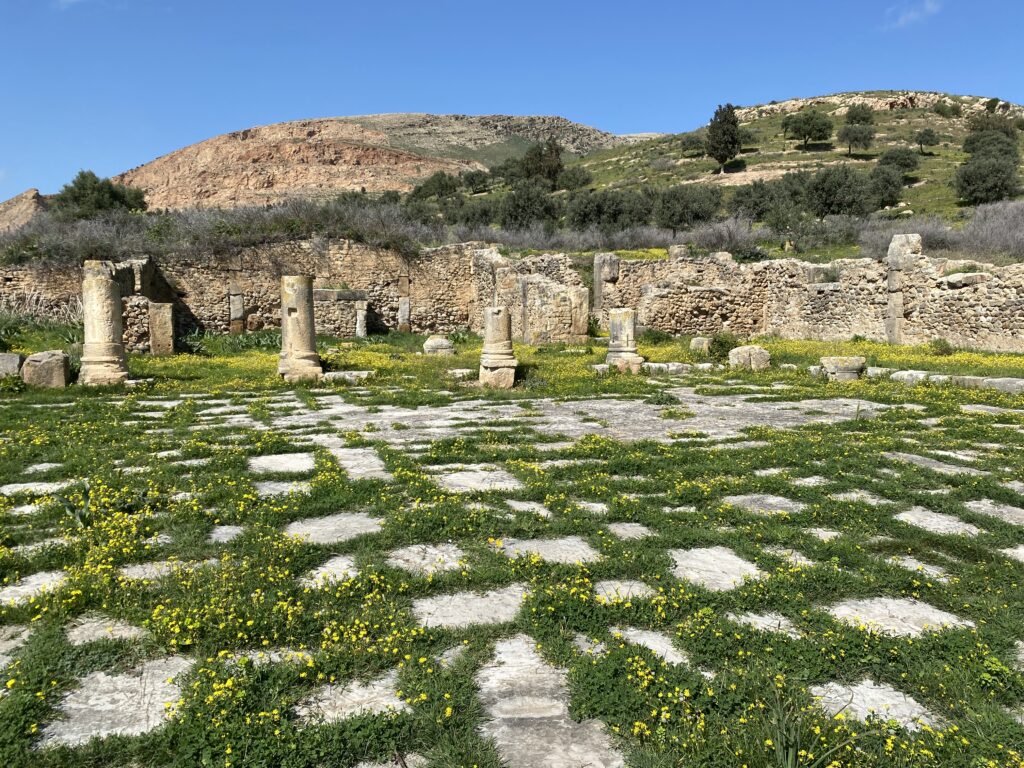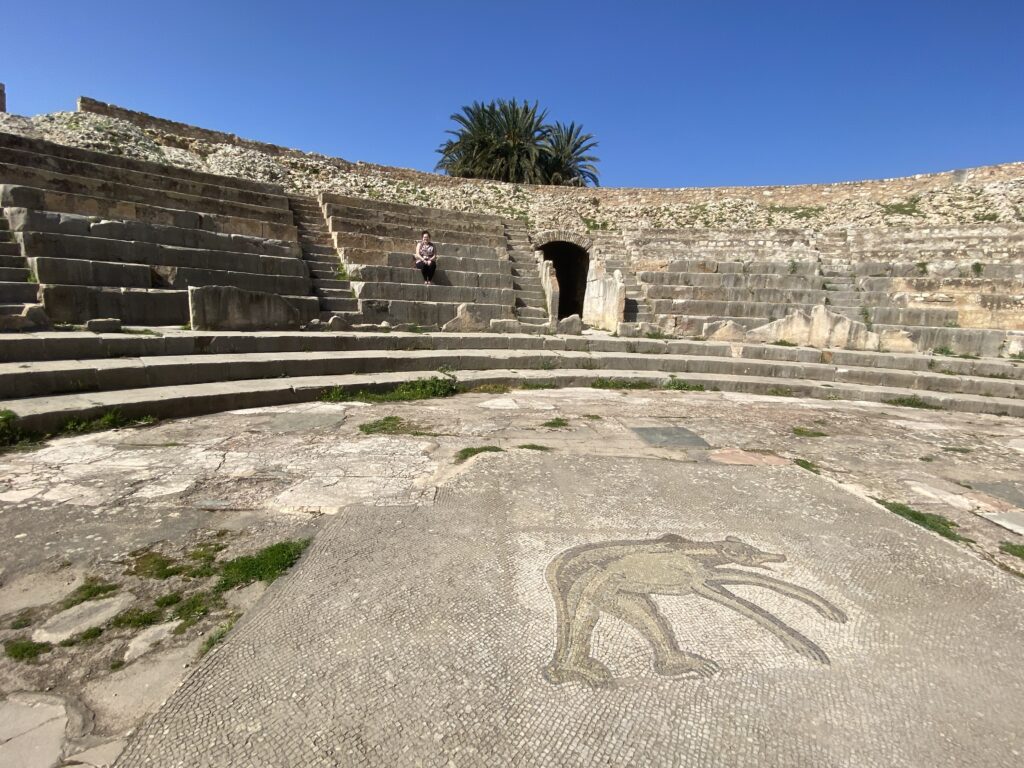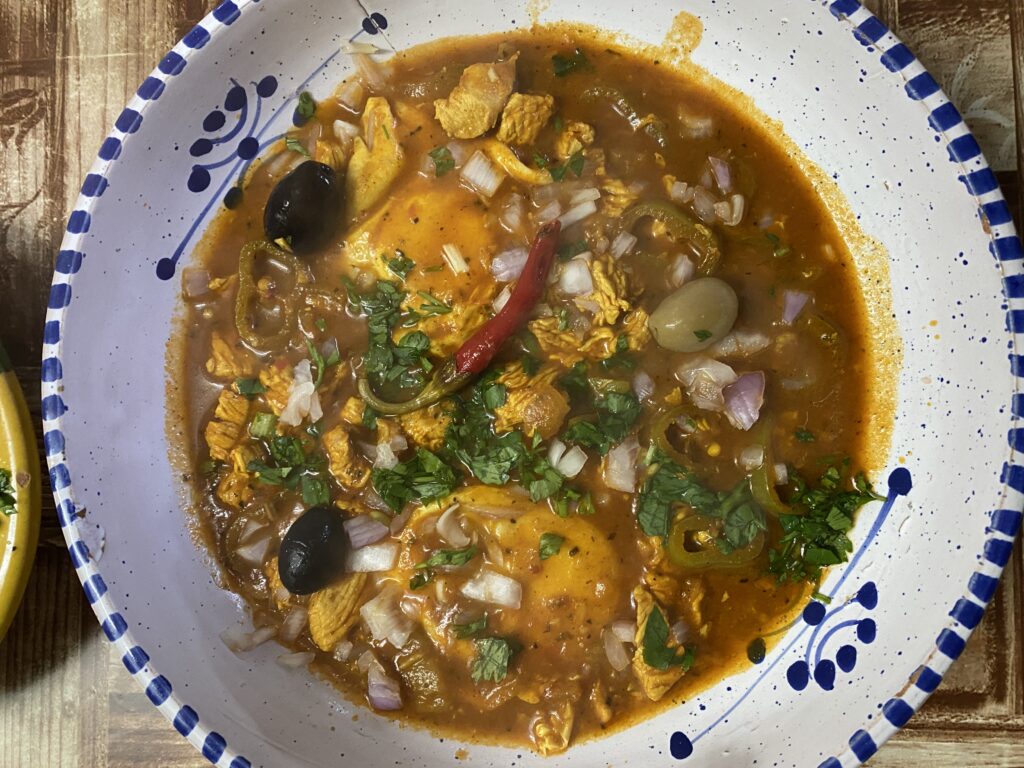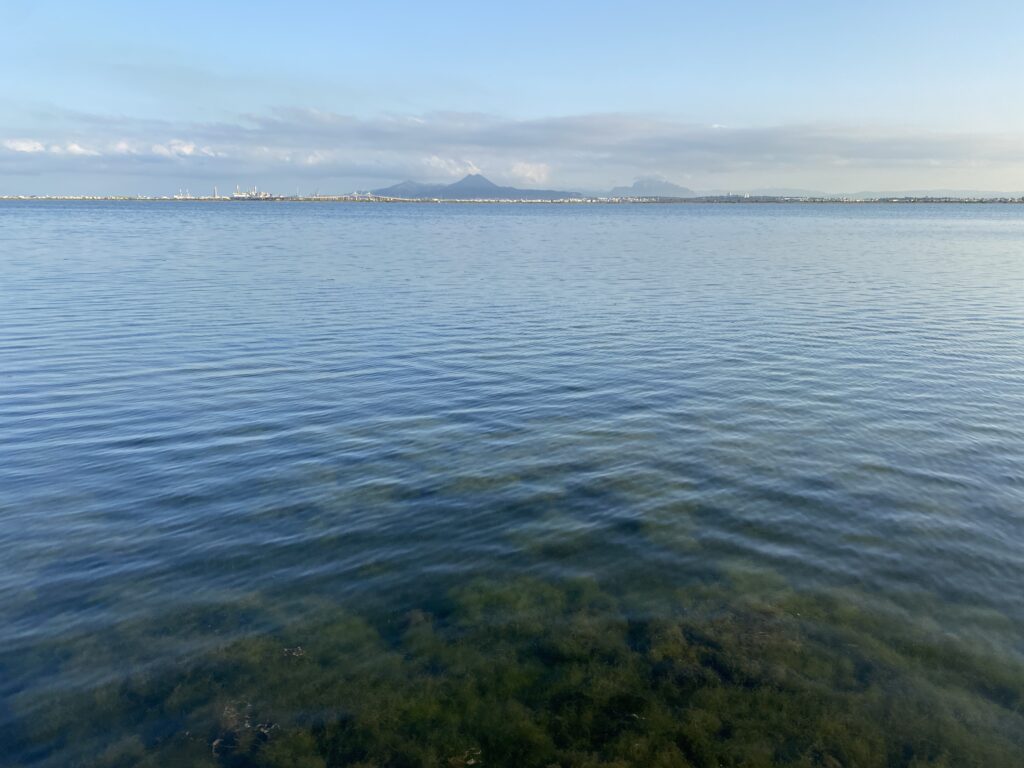To be honest right from the get-go, a single week in Tunisia was not enough. But when is it really enough time for anywhere? Because it is sandwiched between two very large countries (Algeria and Libya), Tunisia appears to be smaller than it really is. The itinerary below, therefore, only covers the northern half of the country. If I could replan the trip, I would probably add at least 4-5 more days to cover the south, including Sfax, Jebil National Park, and maybe even a stop in the Sahara.
Tunis
The trip started in Tunis, where we spent roughly two days. Because it was Ramadan, many things were shut or had adapted schedules, but we still managed to see the Bardo National Museum, the National Museum of Modern and Contemporary Art, Kasbah Square, and Avenue Habib Bourguiba, where the Cathedral of San Vicente de Paul and Tunisia’s “Big Ben” are located. And of course we had time for wandering around the medina – which we did in every city, big or small, that we found ourselves in.
Sousse
Next up was Sousse, on the eastern coast of Tunisia and only a 2.5-hour train ride from the capital. We saw Sousse itself in half a day, going to the medina, the Ribat (a fortress), and the Great Mosque. The two others museums we wanted to see were closed, one because of Ramadan and the other because it was a Monday. We even had time for a quick – eventful! – dip in the sea, which was not as cold as we expected it to be at all.
Kaiuran and Monastir
While we were in Sousse, we took two day trips, the first being to Kaiuran in the morning and the second to Monastir in the afternoon. While we had started out taking the train, we soon found it to be more convenient, and quicker, as well as almost the same price, to travel by louage. Louages are like minivans that don’t have a set schedule and simply leave when they fill up. Morocco has a similar system that we used when we were there years ago. So we took the louage to Kaiuran, about 1.5 hours from Tunis, where we found a rooftop café overlooking the Great Mosque (they are always called the ‘Great Mosque’) to have a quick coffee before wandering through the medina to see the Zaouia of Sidi Sahabi (a mausoleum), the Mosque of the Three Doors, and the reservoirs. Kaiuran is, along with Mecca, known as one of the holy cities, and it is also famous for its carpets. (Of course I bought one.)
Next up was Monastir, about 1.5 hours from Kaiuran, which is where one of Tunisia’s most famous presidents was born and died. So of course it makes sense that their most touristic monument is his mausoleum, whose minarets tower above the city. We also wandered a bit around the medina (of course) and tried to go to the Ribat (closed) and the Museum of Folk Art (also closed), and ended up walking on the beach a bit before finding some food and heading back to Sousse by train.
El Jem
What we soon discovered while planning our trip to Tunisia was that it has more Roman ruins than Italy and Greece combined, and a quick Google search of ‘El Jem’ will give you an example of one of their most well-preserved ruins. The town of El Jem features a huge coliseum, beautifully conserved, and of course cheaper to get into than the one in Rome – 4 euros versus 18 euros. The ticket in El Jem also included the archeological museum, which was built around the ruins of a Roman villa, and had many intricate mosaics, all made from the tiniest pieces of stone imaginable. We saw dozens of these mosaics throughout the country, of every conceivable object: fruits, mammals, fish, sea creatures, plants, and people – many, many, people. I have seen a couple mosaics in Spain, mainly preserved in place in the ruins of Roman villas, but in Tunisia they have mastered the delicate process of removing them from where they have been discovered and relocating them to museums (most can be found in the Bardo museum or one of the numerous archeological museums).
Carthage + Sidi Bou Said
About 20 minutes north of Tunis lie the ruins of Carthage and the picturesque neighborhood of Sidi Bou Said (comparable to Morocco’s Chaouen). We started our morning at Carthage, which, honestly speaking, was not as well preserved as El Jem’s Coliseum or other ruins we saw, but the single 4-euro ticket included entry to ten different archeological sites, and we managed to make it to most of them by hiring a taxi to take us around: first to the museum, which was outdoors, and then to the amphitheater, roman villas, theater, Antonin baths, the Magon quarter, the Punic ports, and the Salambo cemetery, in no particular order. Or rather, in the taxi driver’s preferred order lol. The driver dropped us at Sidi Bou Said, which was normally teeming with tourists, but because of Ramadan and the rainy day, was a bit deserted. We meandered down the blue streets, had a snack, and went home to rest our soaking wet feet.
Testour, Dougga, Bulla Regia
The last day was a guided tour of the Andalusian village of Testour and two sites of Roman ruins, Dougga and Bulla Regia. I’m not quite sure why Testour is referred to as an Andalusian village – it had a Great Mosque like any other, and a small medina with lots of cheese shops, as in addition to pomegranates, cheese is what it is known for. The Dougga ruins were perhaps my favorite of the whole trip – they were stunning, and the nearly cloudless blue sky also added to how picturesque they were. Both the Dougga ruins and those of Bulla Regia, which I spent a combined 3 hours at, are both barely excavated. This was perhaps the most interesting I learned about them: the guides told me that only 25% of each of the sites has been dug out, with most of them still being under hills and fields of 300-year-old olive trees.
As I mentioned Ramadan a couple of times already, I wanted to add that in addition to schedules being altered and many cafés and restaurants closed, Ramadan meant the streets were quieter and the menu availability was more restricted. Iftar, when Muslims break their fasts, happened around 6:30 p.m. in Tunisia (it is different depending on where you are), and the restaurants briefly opened to serve an iftar meal, which meant that their normal menus were not available. In one case, I really wanted to try one of Tunisia’s national dishes, ojja, which is kind of similar to huevos rancheros, and the restaurant owner was able to make it, but the other days we simply had whatever was on the iftar menu.
While traveling during Ramadan was it’s own kind of adventure – involving a multitude of snacks – I would not recommend it, as I felt like we missed out not only due to some of the museums being closed, but also because we were only able to go to a handful of cafés, which is one of my favorite parts of traveling.
In any case, even with a few bumps in the road (more than usual!), we still had an enjoyable trip, and as always, I would recommend a trip to Tunisia to whoever might be interested.
